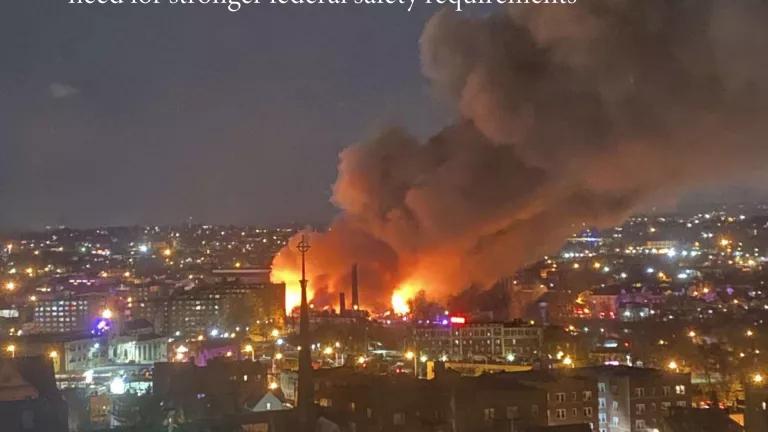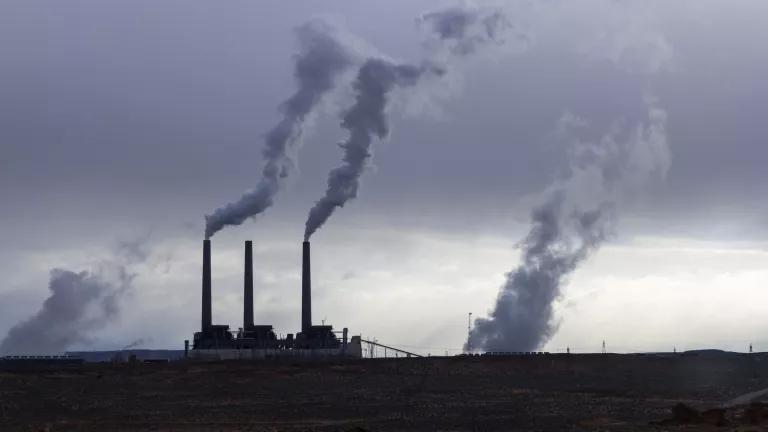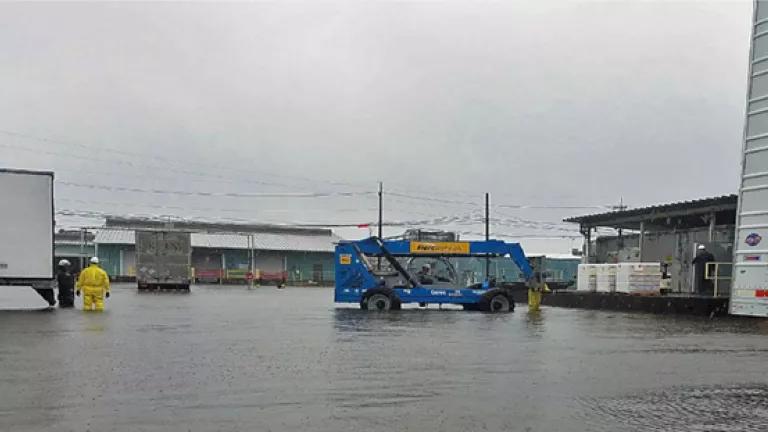
Coming Clean and EJHA's report, "Preventing Disaster: Three Chemical Incidents Within Two Weeks Show Urgent Need for Stronger Federal Safety Requirements"
Acrid smoke filling barely breathable air. School buildings shaking as students and teachers sheltered in place. First responders fighting fires over multiple days, and at a disadvantage due to the hazardous chemicals present. This was just some of the havoc wrought by three dangerous incidents at chemical facilities that occurred within a two-week span in January 2022, all of which caused significant harm to workers and communities. A timely joint report by Coming Clean and the Environmental Justice Health Alliance for Chemical Policy Reform (EJHA) analyzes these incidents and uses them as a lens to address the adequacy of the Risk Management Plan (RMP) rule, the U.S. Environmental Protection Agency’s (EPA) primary regulation intended to prevent chemical disasters. And, as EPA has recently proposed revisions to the RMP rule, Coming Clean and EJHA identify where EPA needs to do better in order to achieve its stated goal: protecting communities and advancing environmental justice.
EPA’s goal reflects the longstanding truth that the harmful impacts of such incidents are not distributed evenly; the industrial and commercial facilities regulated under the RMP rule disproportionately endanger communities of color and low-income communities, by generating chronic problems, like air pollution, and acute impacts from specific chemical incidents. The percentage of Black individuals living within the “fenceline zone” of an RMP facility is 75% higher than the percentage of Black people in the U.S. as a whole; for Latinx individuals, the population within the fenceline of RMP facilities is 60% greater than the national proportion. Overall, the poverty rate in these fenceline zones is 50% higher than its national counterpart. A close study of nine communities containing clusters of RMP facilities also found that schools and medical institutions tend to be located within these fenceline zones at greater rates than nationally.
The three incidents that occurred within weeks of each other in January 2022 illustrate some of the most pressing needs for EPA action to protect workers and communities living near hazardous facilities. On January 14th, a fire broke out at a Majestic Industries warehouse in Passaic, New Jersey, and spread to the Qualco Inc. chemical plant on the same lot, which houses up to 3 million pounds of chlorine pellets and other industrial chemicals. While nearby residents were told to shelter in place, 200 firefighters battled the fire for three days—without the aid of sprinklers on the Qualco site since sprinkler water would mix with the chemicals stored on site to create poisonous chlorine gas. The first responders barely succeeded in preventing the fire from reaching Qualco’s chemical stockpile, which contains several tons of chlorine and other explosive, flammable, or toxic compounds. If the fire had ignited this stockpile, it could have caused “one of the most catastrophic chemical disasters in the region in recent history,” according to fire officials.
On January 26th, an empty ethylene dichloride storage tank exploded at the Westlake Chemical South plant in Louisiana, which is the second largest chlorine factory in the Western hemisphere. Residents reported a “mushroom-shaped cloud” of black smoke above the facility; more than 7,000 students in nearby schools had to shelter in place while their school buildings shook during the explosion. The Westlake Chemical South plant stores and manufactures millions of pounds of toxic chemicals, including ethylene dichloride, which is both flammable and carcinogenic. Further, it is one of 37 RMP facilities in the greater Lake Charles area. A worst-case chemical incident involving the Westlake Chemical South plant alone could have released up to 660,000 pounds of highly toxic gas covering a 25-mile radius, which includes all of Lake Charles. If an explosion like the one in January were to impact other nearby chemical stockpiles—or if a natural disaster like a hurricane hit the area and affected multiple RMP facilities at once—the damage could increase exponentially.
Just a few days later, on January 31st, a fire broke out at the Winston Weaver Fertilizer plant in Winston-Salem, North Carolina—a facility that was storing 600 tons of explosive ammonium nitrate on site. That evening, 6,500 people within a one-mile radius of the plant were told to evacuate for fear of a massive explosion. It took an entire week for firefighters to fully extinguish the fire; during this time, the surrounding neighborhoods were choked with fine particulate matter, and nearby schools and workplaces were closed. Had this fire caused an ammonium nitrate explosion, the damage could have caused “one of the worst explosions in U.S. history,” according to the Winston-Salem fire chief. For comparison, a 2013 ammonium nitrate explosion in West, Texas killed fifteen people, injured over 250, and destroyed more than 150 buildings in the vicinity—with just a tenth of the ammonium nitrate that was stored at the Winston Weaver plant.
EPA recently proposed updates to the RMP rule that are intended to protect communities and advance environmental justice, but the rule still relies too much on voluntary commitments from chemical facilities; it does not go far enough to prevent either the dangerous incidents that took place in January or the potentially horrific scenarios that threatened to develop from those incidents. Coming Clean and EJHA recommend that the EPA require all RMP facilities to consider, document and implement safer alternative chemicals and processes whenever possible. The proposed rule only requires 5% of RMP facilities to assess safer alternatives, and notably exempts Westlake Chemical South, which has reported at least 14 incidents to the EPA since 2004. And as climate change increases the threat of natural disasters, RMP facilities should be required to explicitly plan and prepare for these incidents. Finally, the proposed rule should lower the threshold for hazardous chemicals that trigger coverage under the program and expand the program to include new chemicals, including ammonium nitrate.
Ultimately, it is critical that EPA’s proposed updates to the RMP rule stop depending on voluntary actions by RMP facilities and start requiring preventative measures to protect the people working at these facilities and living in the surrounding communities - especially by removing hazards whenever possible. EPA is accepting public comment on the proposed changes to the RMP rule until October 31, 2022.
Updated November 1, 2022: The comment period on the draft RMP rule has now closed. You can read NRDC's submitted comments here.




